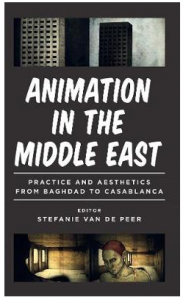TMC Project research associate Stefanie Van de Peer has just published a collection of essays on Animation in the Middle East (IB Tauris). Animated films from the Middle East and North Africa hardly ever make it into cinemas globally, or onto the film festivals circuit, let alone into academic studies of the art form. And yet, animation is an enormously popular art form that is widely practiced and exhibited. It is not only popular with local audiences, it is also a form through which artists can attain the representation of, on the one hand, a more complex transnational identity, and, on the other hand, a more expressive entrepreneurial outlook. With the rise of regional interests in the production, distribution and exhibition of local creative material, the fast developments in animation embody and reflect the cinema of the region’s growing confidence and substance on a global scale. The book aims to reveal the significance of animators in Middle Eastern and North African film culture, while rooting the contemporary developments firmly in a local interpretation of, and experimentation with, the art form.

One of the chapters in the book offers an in-depth study of animation in Morocco. Here, the author of that chapter, Dr. Paula Callus from Bournemouth University, offers a short overview of that chapter, to provide an introduction to the chapter on this neglected but inherently transnational form of filmmaking in the country.
The contemporary landscape of animation in Morocco is in the most part spoken of in digital contexts; on Facebook, blogs, Youtube, and other web-based platforms. So whilst Morocco has long standing engagement with film practices, with the establishment of the Centre Cinematographique Marocain (CCM) in 1944, animation in Morocco does not exist within the same narrative. This peripheral position is common across other histories of animation, that have taken a back seat to the more prominent moving images of live-action film. This has resulted in a notable lack of academic documentation around this form in particular in relation to non-Western contexts. The publication of Animation in the Middle East was an important and much needed contribution to knowledge that drew attention to the different histories and forms emerging from these contexts. The account of animation in Morocco, included in this publication, gave me an opportunity to
